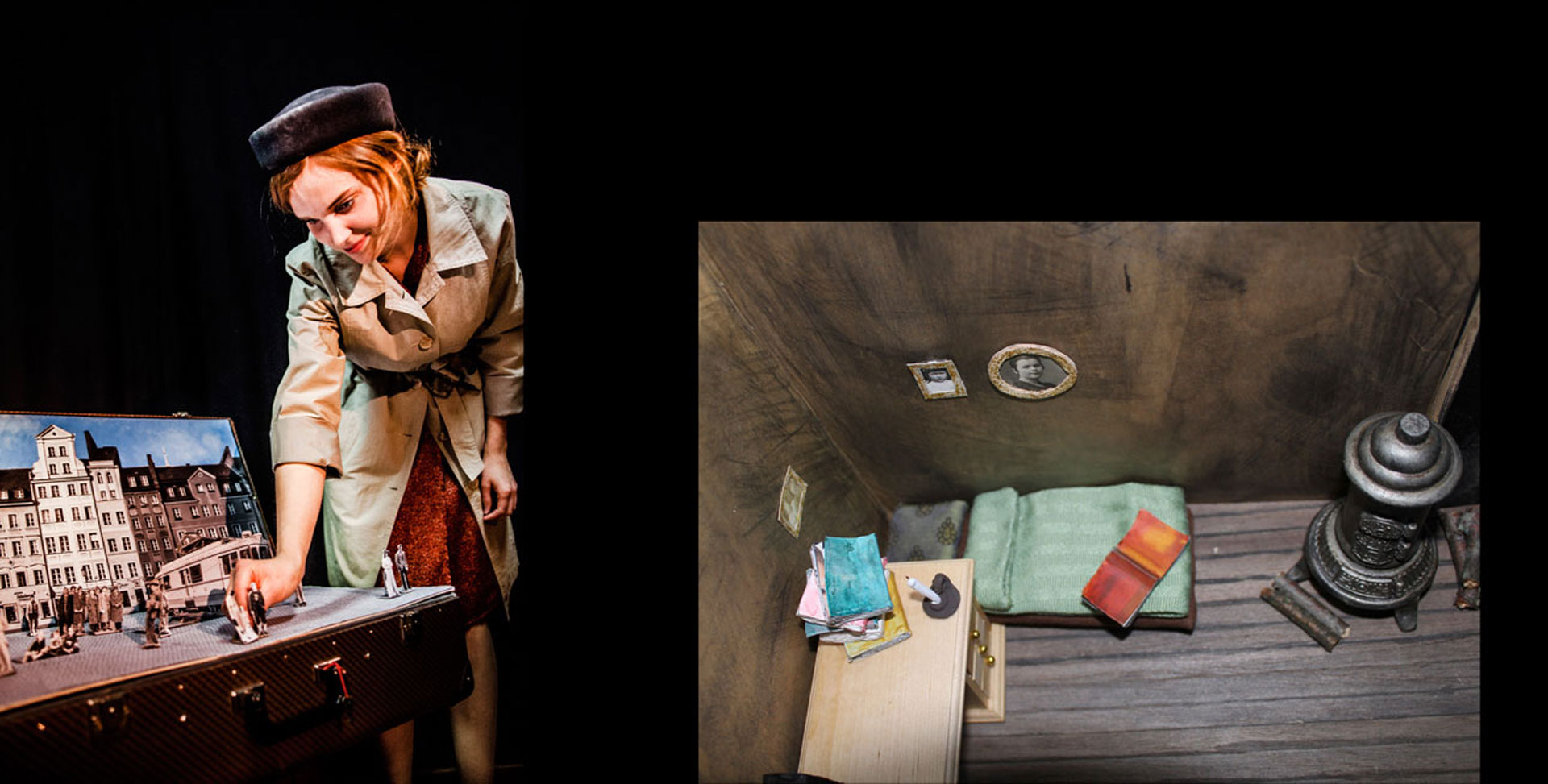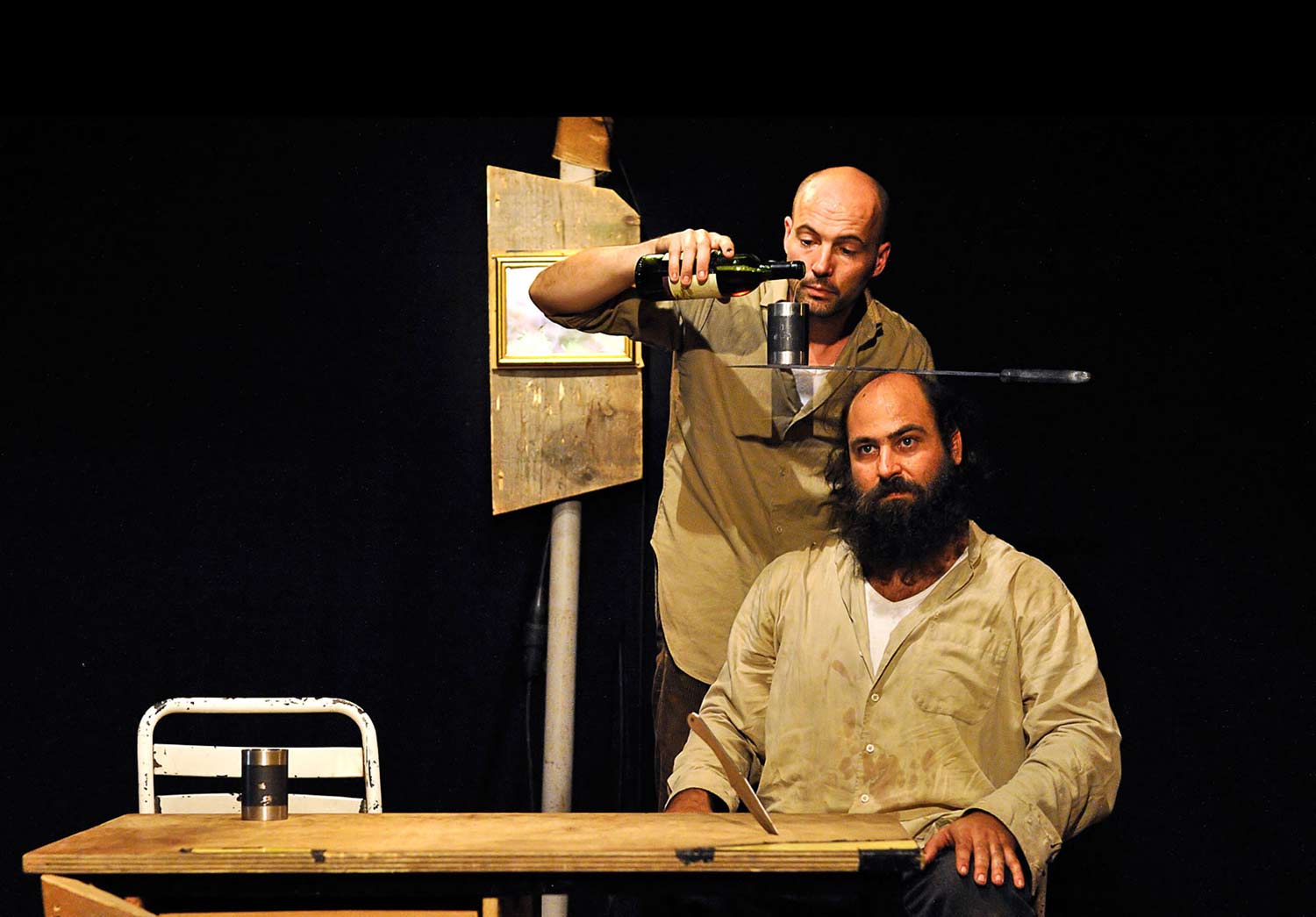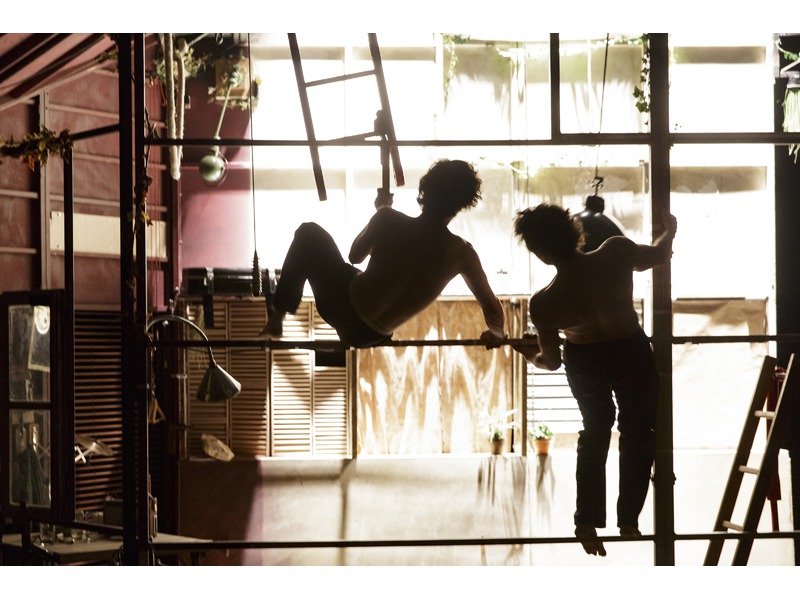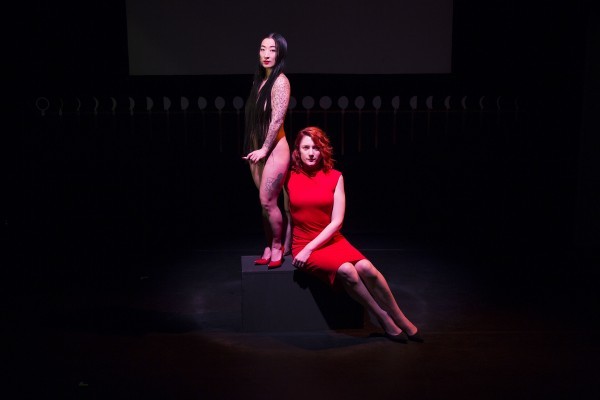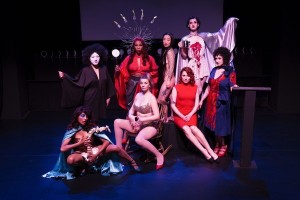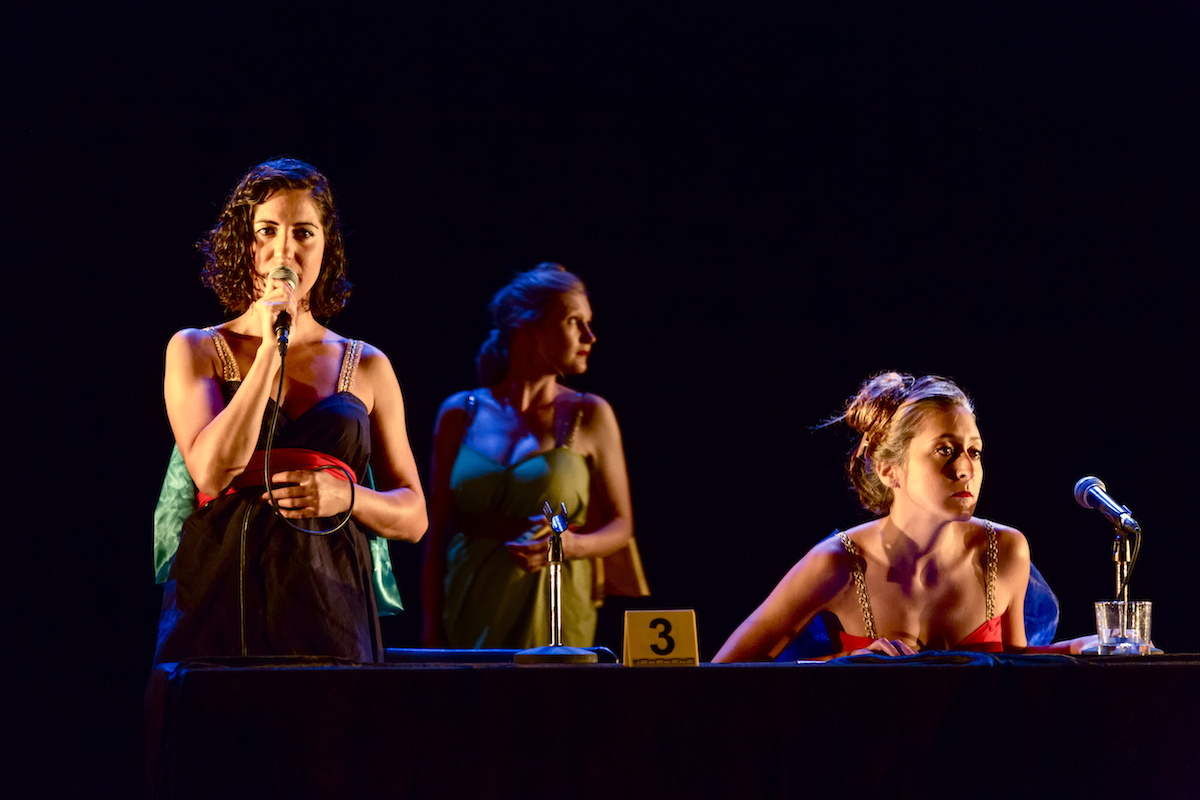A world within a suitcase – tall town houses, a tram, and little paper-cut people happily going about their business. A mother and daughter holding hands. A group of adults waiting at a stop. Children sitting on the pavement. A man taking a stroll. Everyday life. The female performer manipulating the little people provides an underscore of small murmurings in French, and a vintage jazz tune plays in the background. The music stops. A pair of giant hands clad in black leather gloves descends on the scene, snatching up the little people carelessly, counting them as they are thrown into a truck. Who knows where they are going.
But of course we know. We know too well. It’s a story we all know, and a story that has to be told, again and again, lest we forget.
Only One Suitcase Allowed opened at the London International Mime Festival on Holocaust Memorial Day, 27 January, a date that marks the liberation of Auschwitz-Birkenau, the largest Nazi death camp. It is inspired by the story of Anne Frank, but it is also the story of the many millions – millions, it is still almost impossible to compute what happened, here in Europe, just one generation ago – millions of people who were taken, hounded, hunted, transported, murdered by Hitler’s fascist regime. Jewish people, gay people, Roma people. Anyone who was seen as an ‘undesirable’.
The show takes its title from the many documented stories that state that when people were rounded up to be taken to the camps, they were told they could take only one suitcase. They fearfully, but perhaps hopefully, packed – what? What would you take? Your mother’s jewellery? Your best dress and shoes? Photographs of your children? Or perhaps something more practical? Of course, these suitcases were taken off them at the door of the camp – their valuables stolen from the victims along with their lives. The suitcases can still be seen today at the Auschwitz and Birkenau camps.
So suitcases are the central metaphor of the show – the objects that form the scenography of the piece and its core dramaturgical device. A great pile of suitcases confront us, accusingly. Inside the suitcases, there are many tiny worlds – mostly viewed through little peephole lenses. These worlds are beautifully crafted, showing us interiors that become ever more restricted and oppressive. A comfortable living room, a small hidden room behind a bookshelf, doors that open to show other doors that open, a dark van interior, a discarded teddy bear…
It is a straightforward story, and there are no surprises in the narrative – much as we would like it to end differently – although how the story is told is novel. The design is exquisite, and would appeal strongly to anyone interested in Toy Theatre, paper cuts, or peepshow booths. Attention to detail is admirable. The tiny suitcase worlds are the perfect metaphor for the ever-diminishing worlds of the victims, trapped like dolls in a dolls house, always under surveillance. The performance is strong and sound – we are guided efficiently and lovingly through this carefully crafted landscape.
Another important aspect is who is choosing to tell this tale. Nordic Puppet Ambassadors are director Outi Sippola and performer Linda Lemmetty (the two also co-designed the show). They are Finnish, and say in their programme notes that although some people in other countries might feel that they have Holocaust fatigue, their generation in the Nordic countries feel far removed from these horrific events, and thus the creation of the show involved extensive research, including a visit to the camps.
Those who cannot learn from history are doomed to repeat it, said George Santayana. One cynical response to that is that history repeats itself because no one was listening the first time. It is our duty to listen, to look and to listen. To remember, and to stay alert.
We are grateful, therefore, that these young artists have seen fit to investigate this story, and to present it to us with fresh eyes. It is just 15 minutes long, a one-on-one, and it is both beautiful and heartbreaking.

